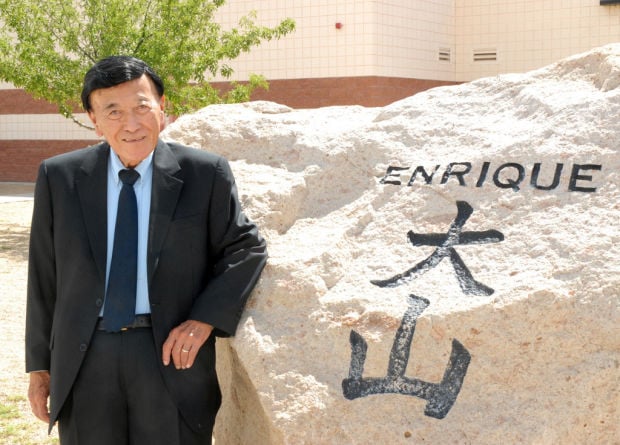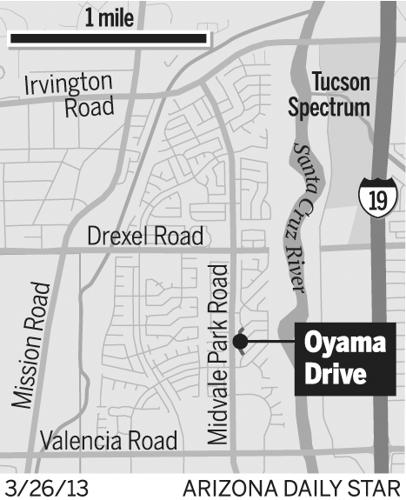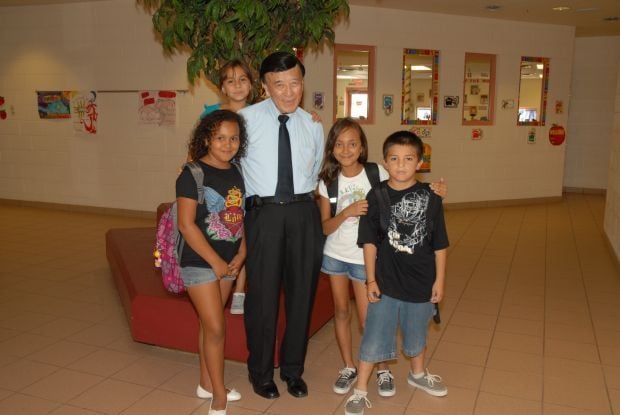You may already know that longtime local educator Henry "Hank" Oyama has a school named in his honor.
But a southwest-side street also bears the name of the bilingual-education advocate, who died last week at age 86.
Oyama was born in Tucson in 1926. His mother, Mary Matsushima, was of Japanese descent but was was raised in Mexico, where her father relocated after her mother died.
Father and daughter eventually moved to Arizona, and she married Oyama's father, also named Henry Oyama. The pair had two children, Rosalie and Hank.
The elder Henry Oyama died five months before Hank was born. The siblings were raised speaking Spanish in the Mexican barrio where the Tucson Convention Center now stands.
Oyama learned English at what was then called Davis Elementary School.
After the attack on Pearl Harbor by the Japanese in 1941, and fearing an invasion of the West Coast, President Franklin D. Roosevelt issued an executive order that sent thousands of Japanese-Americans to internment camps, along with a small number of Italian-Americans and German-Americans.
The Oyamas - Rosalie and Hank were then teenagers - were taken to the Poston Relocation Camp in Western Arizona. The three of them lived in barracks along with other families, separated only by sheets for privacy.
Oyama learned internees could leave the camp by finding work outside the restricted zone, which was the West Coast of the U.S. and Southern Arizona. He moved to Kansas City and found work at Alcoa, where he made parts for aircraft in support of the war effort.
At 18, Oyama was drafted into the military. He was sent to Panama, and his role was to carry out surveillance and to protect high-ranking officers who visited the country.
After the war, he earned a master's degree in counseling and guidance from the University of Arizona in 1954.
He spent the next 15 years at Pueblo High School, where he taught Spanish. He was also part of a group of educators who published an influential report on bilingual education, "The Invisible Minority." His next stop was Pima Community College, where he would spend the next 22 years in bilingual and international studies.
Henry "Hank" Oyama Elementary School, at 2700 S. La Cholla Boulevard, also is named in his honor.
Editor's note
Each week the Star tells the stories behind Tucson street names. If you have streets to suggest or stories to share, contact writer David Leighton at streetsmarts@azstarnet.com
Sources: Special thanks to Tony Arroyo and Dolores Duran-Cerda of Pima Community College. Margaret Regan, "Our Bilingual Education Pioneer," Imagine Magazine, Fall 2010 Nicole Greason, "Retirement won't separate PCC's Oyama from 'cause,'" Tucson Citizen, July 7, 1992 Luige del Puerto, "50 years ago: Tucson couple broke down barriers to interracial marriage," Arizona Capitol Times, Nov. 1, 2009 Michael Luick-Thrams, "Vanished: German-American Internment, 1941-48," Traces Pub., 2005 Alexander H. Leighton, "The Governing of Men: General Principles & Recommendation Based on Experience at a Japanese Relocation Camp," Princeton University Press, 1945 Stephen Fox, "The Unknown Internment: An Oral History of the Relocation of Italian Americans during World War Two," Twayne Publishers, 1990 Arthur D. Jacobs, "The Prison Called Hohenasperg: An American boy betrayed by his government during World War II," Universal Publishers, 1999







